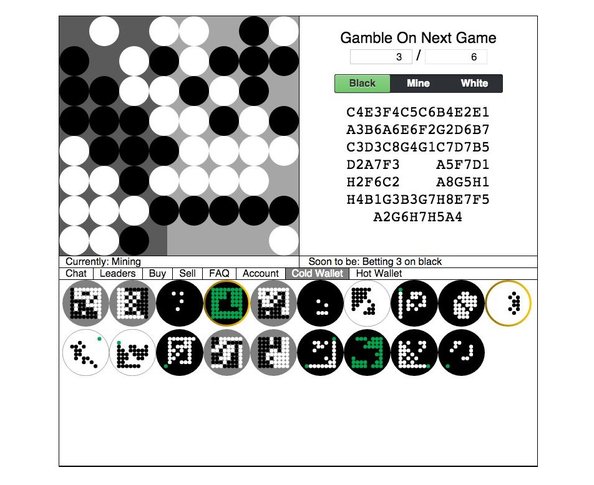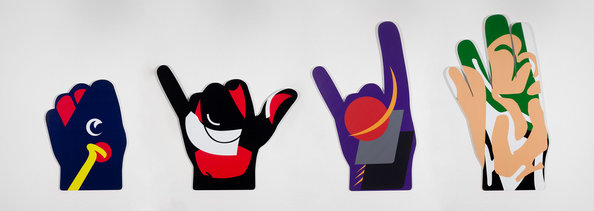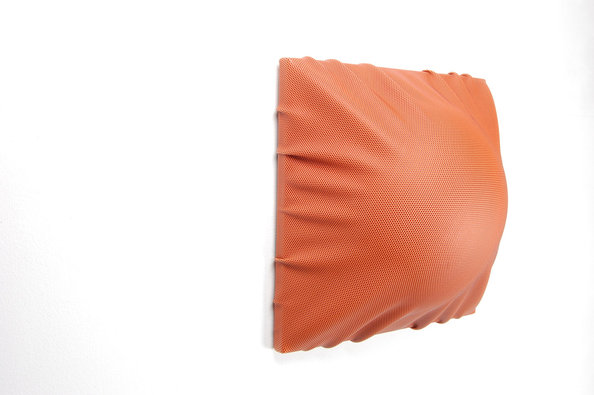When play becomes art: Billy Rennekamp is a Berlin based artist and part of the Translantics web series. A portrait on SCHIRN MAGAZINE
In the Berlin studio of US artist Billy Rennekamp, who was born in 1988, an endless number of objects are gradually accumulating; objects which, at first glance, one might choose to summarize under the category “leisure time”: balls, goals, polo mallets, board games and the various pieces are spread throughout the room. Billy considers himself a hoarder, yet his studio seems very structured, as everything relates to the topic of playing. He is interested in how a few rules can form the basis for systems and miniature worlds, and how he can manipulate these rules within his art.
At the moment, Billy is particularly fascinated by board games: he is working on the Japanese game Othello which, in a slightly different form, is also known as Reversi. During his studies, he programmed the game for two computers that automatically played against each other. This way, he aimed to find out how many games end with a symmetrical board of black and white stones and what the configurations then look like. Due to the immense number of possibilities, a definitive result will first be reached in a few decades’ time. For Billy, the project has become something of a hobby: He has converted it into a gambling Website where users can win crypto-coins. “I think of it as my artistic dad-basement-project. I don’t even know if I look at it as an artwork or not.”

Billy’s penchant for games and programming began with video games, which he discovered as a child by way of compensation for his rural, hippy upbringing. His father is a horse-trainer from Kentucky – “a real cowboy”, who wears faded jeans and a cowboy hat over his red, curly hair and freckles. Billy, however, has something of a split relationship with rural life, believing, on the one hand, in “this horse-whisperer vibe” while, on the other, having a soft spot for electronic devices, mathematics and science. The latter gained him a position in his school’s Technology Leaders Club at the age of seven. “I think you respond to things that you are good at”, explains Billy, who studied Film and Electronic Arts at Bard College in New York.
Billy’s route into contemporary art came primarily through his professor Ed Halter, a critic and curator, who showed him how the early avant-garde cinema eventually transformed into internet art. Digital art appealed to Billy, not only because of the affordable production costs and limitless possibilities, but also due to the networked community. Together with artist colleagues like Petra Cortright, Eric Mack, Hayley Silverman and Travess Smalley, he set up “surf clubs”, collaborative online blogs and collectives, such as Loshadka.org, HandEyeCoordination.org, and IndexOfPotential.net. “It was all about meeting people.”

In 2009, Billy received a grant to work in Berlin as an intern under artist Oliver Laric: “For a while I thought being an intern was the best thing in the world”. He felt the idea of working for free was a sort of donation to a good cause. He also completed internships under other experts in digital art, including New York’s DIS Magazine, artist Cory Arcangel and Rhizome.org, and in doing so spent 2012 going to and fro between New York and Berlin, but he eventually decided to settle in the German capital in 2013.
Billy believes the community of international artists working with the Internet has now expanded to such an extent that the original intimacy has been lost. This is another reason why, in Berlin, he is directing his focus more pointedly towards physical objects. Billy is transferring his interest in video games programmed according to software-based sets of rules onto different sports. “It seemed like a seamless transition, as if the sports were like a physical version of software, a set of rules manifested in the physical world.” With a passion for detail and great artistic skill, Billy produces balls with modified patterns, collages sports club logos on hand gestures, and alienates objects like hoops or goals, which sometimes point to their original function by way of their materials only. For Billy, sports materials are exciting precisely thanks to this functionality: “They represent this boundary between a physical and a rule-based world.” At the same time, the objects satisfy his physical yearning: “I want to touch these things. I have to make the object, so I can be with it.”

The material fetishism he pursues in his current works is, he believes, already a part of these objects’ material function, because “they are made to be touched”. This idea becomes clear in a wall sculpture, for example: it consists of a frame, over which basketball material is stretched; underneath this, the form of a ball hovers, creating the impression of a pregnant belly. The title of the work is “TBA”, meaning “to be announced”. For another work, he sewed together black and white pieces of leather to create the pattern of a football – a blunt icosahedron – and then slid on the sheet of leather down the grass of a muddy slope, subsequently stretching it over a frame like a canvas. The still visible dirt on the material, Billy says, emphasizes the difference between digital perfection and real-world fallibility – “the inevitable failure of physical work coming from a digital perspective”.
Billy's studio in Berlin Neukölln is next to Britta Thie's and they know each other for a long time. She gave him a role in her series project Translantics: as artist and gallery assistant Ben – a playboy of the art world. He actually wanted to give his character a Southern accent to detach it more from his real self, but Billy gave up on it during filming of the first episode. He sees Translantics as a fanciful, yet also self-reflective “high school sitcom”: “Britta maybe cast me because I am part of that corner of the art world she’s focusing on. I think the show is satirical, but not condemning, since we’re all kind-of guilty of being part of the world depicted.”